European Nymphing Full Article
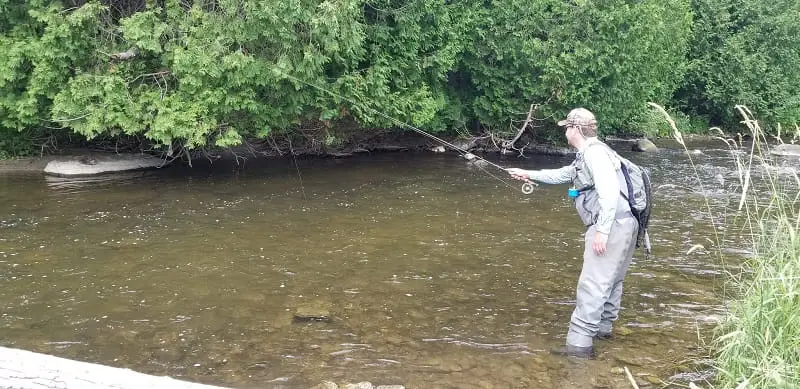
Euro nymphing can mean a lot of different things to different people because European Nymphing is a mix of multiple methods or variations. I’ve had the opportunity to learn many of these methods from experts including a world champion fly angler, Team USA fly fishing coach, and many members of national fly fishing teams.
Since 2008, I have also been teaching all forms of Euro nymphing through my guide service, and all of my guides prefer Euro-style nymphing over other nymphing methods because it is often the best method for bigger fish and lots of small trout.
I have determined that some versions of European Nymphing are more effective when used in different types of rivers and I’ll discuss that below.
What Is Euro Nymphing?
Euro Nymphing is a short line nymphing method that uses very thin leaders, weighted flies, and a piece of colored line known as a sighter. All of this is used together to suspend the nymphs off the bottom while the angler maintains direct contact with the flies which greatly improves strike detection.
When done right it allows me and my clients to be able to control the speed and depth of the nymph while maintaining a tight connection between the rod tip and the fly. Because of this, it’s often the most effective way to nymph and to catch trout, which is why the pros use it.
What most anglers don’t realize is that the term Euro-nymphing or European Nymphing is a broad term that can be 5 or 6 different methods that originated in Europe from the competition anglers.
Many competition anglers in North America will call it Tightline Nymphing or Competition Nymphing.
Whatever you call it, Euro-style nymphing can consist of one method or variations of these methods and even combinations of multiple methods.
Knowing which European Nymphing method is best for you, or which is best for the river that you fish will depend on a few factors.
Why Euro Nymphing Is Better?
There are 3 things that make Euro Nymphing better than other traditional nymphing methods.
- Speed Control: If I had to say the one thing that makes this method superior to all other methods of nymphing it is speed control. The use of super thin tippets prevents the surface current from pushing the flies at abnormally fast speeds. There is also no indicator that the current will push and then drag your flies. Speed control is critical – See Dead Drift Nymphing Speed: Speed Control.
- Strike Detection: With this method, your line is under controlled tension from the bottom fly to the rod tip, and with the use of a Sighter the strike detection is superior which means you will hook more fish.
- Depth Control: When fishing with a strike indicator, the depth of your flies are set throughout the drift. However, with the help of the sighter and a good pair of polarized sunglasses, I can adjust the depth of my flies through the entire drift as needed based on what I see.
Other common nymphing methods like indicator nymphing and the old school high-stick nymphing that are common in North America were invented by North American anglers and guides, but Euro Nymphing was designed, improved, and then improved again and again by multiple fly fishing competitors.
Therefore, in my opinion, it is far superior.
Origin Of Euro Nymphing
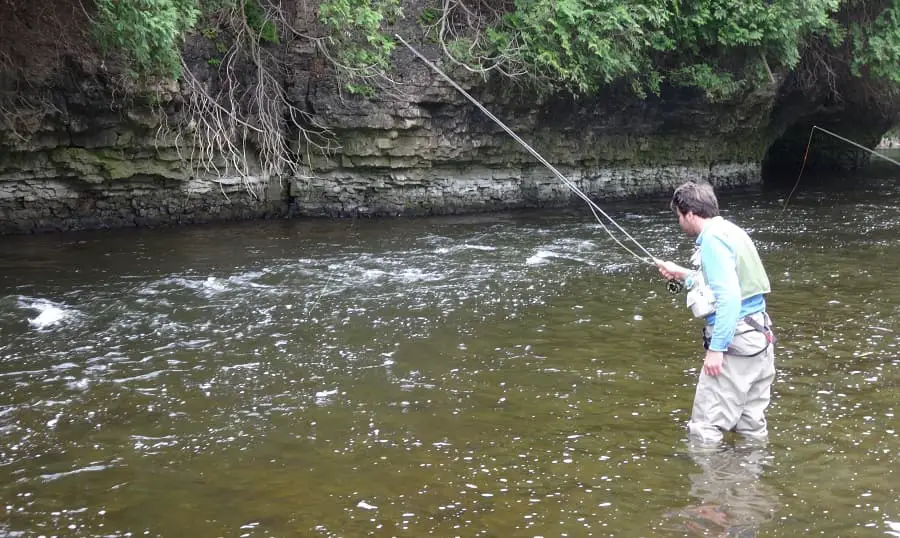
I first learned the history of European Nymphing from Jack Dennis who was one of the first coaches of the USA National Fly Fishing Team.
Jack’s version of the story starts when the USA started participating in the European fly fishing competitions which is when anglers from outside of Europe first started seeing an unusual method they called European nymphing. This is also when they realized how effective it really is since the Europeans dominated the competitions.
Back then, European nymphing started with a Polish Nymphing version which was then taken and changed by the Czech competition anglers. Their method became known as the more popular method called Czech Nymphing.
Polish and Czech-style nymphing are great in certain types of rivers, but they are not so great in other types of rivers.
Over the years competitive fishing grew and the French and Spanish anglers started to adjust and change the technique to be more suitable to their shallow clear rivers, and as it stands now in 2023, it’s really hard to beat the French and Spanish competition anglers in the world championship competitions.
It’s also very hard to beat anglers that are versatile and know how to fish all the European methods and the variations which allow them to do well in any river condition they are faced with.
Modern Euro Nymphing
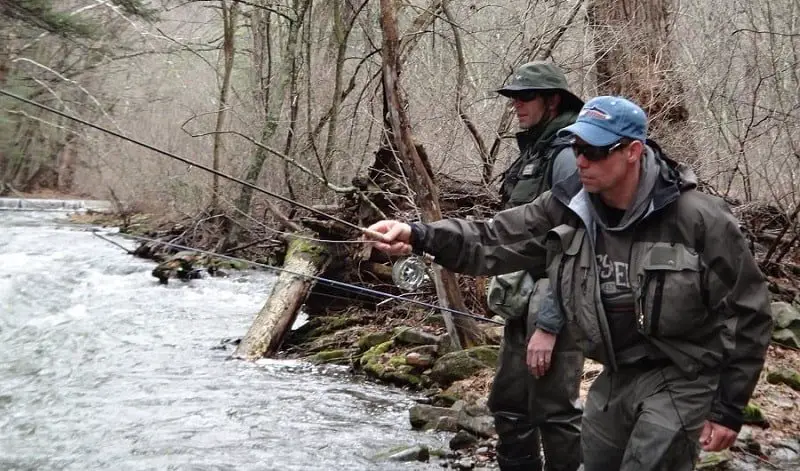
Today, European Nymphing consists of French nymphing, Spanish nymphing, Polish nymphing, Czech nymphing, and probably 50 other variations from competition anglers and guides like me.
Guides and competitive anglers have revised these methods to be more suitable and more effective on their rivers. Many local guides will call their variation Tight Line Nymphing.
Basic Principles Of Modern Tight Line Euro Nymphing
Despite the many versions, the basic principles of tight line nymphing is a high rod tip, a long leader, thin tippets, weighted nymph flies, a Sighter , and controlled tension on the leader and the fly.
What changes from one version to the other is the length of the leader that is used, the leader setup, the weight of the flies, the positioning of the euro nymphers, and where they target the fish from.
The Euro Rod
The Best Euro Rod Lenght: You can use any fly rod, however, the trend is to use longer rods of 10 to 11-foot. There are now very good euro rods available.
I find a longer rod of 10 feet is ideal for the small to mid-sized rivers that I fish. On larger rivers nymphing rods of 10’6 to 11’6 are good options.
When dealing with long Euro nymphing rods, I recommend going lighter than you normally would since the longer rod makes the rod heavier.
Euro Best Rod Weight: I use 10 foot 2 weights, and 3 weights for brown trout up to 28 inches. For larger trout over 30 inches, maybe upsize to a 4 or 5 weight but honestly, I’m sure I can land a 33-inch brown trout on my 3 weight.
What Type Of Reel Is Used For Euro Nymphing?
You can use any type of fly reel to Euro Nymph. It is best to match the fly reel to the rod.
The Fly Line
With traditional Euro nymphing methods, and even with the newer modern methods, the fly line is rarely used because a normal fly cast is not required.
Most of the time all that is out of the rod tip is the leader. You can buy fly lines designed for this method however it is not required if you have your Euro Nymphing leader set up properly.
Weights and Indicators
Unlike traditional nymphing, there is no traditional ball or yarn-type strike indicator used and no split shot are added to the leader there is no mending required.
Occasionally, under certain situations and for certain reasons like when using a single size 18 to 22 fly, I will add weights like split shot or weighted putty to the leader to get the fly down, to be able to cast the fly, and to maintain controlled tension. But normally, with bigger Euro Nymphs there is no split shot added to the leader.
Since we don’t use indicators, instead we use a colored piece of line known as a Sighter.
However, in slower stillwater, or when fishing distances, or when fishing very windy conditions, there are times when an indicator can be used for a variation known as suspension nymphing.
The Sighter Line
One of the key elements that makes this method different from other nymphing styles is the multi-colored section of line in the leader called a Sighter.
The sighter is a 12 to 36-inch piece of colored monofilament that goes part way up the leader and is strategically placed in an area that best suits the Euro nymphing leader and the river conditions.
When fishing deep the sighter line might be 6 to 10 feet up the line, but when fishing shallower water under 3 feet deep the sighter line can be 3 to 6 feet up from the lowest fly on the Euro nymphing rig.
In the past colored mono was used for the sighter but now you can buy specially made sighter material that is bi-colored, or tri-colored. Multiple colors aid the angler in seeing the sighter easier.
Flies For Euro Nymphing: Euro Nymphs
When Euro nymphing, specially weighted nymphs called Euro Nymphs are used. The flies are tied with a Tungsten bead or with lead wire wrapped around the hook shank before the fly is tied.
Depending on the fly anglers ability and the laws in the area, 1 to 3 nymphs are used at a time to cover different parts of the water column all at once.
Personally, I use 2 nymphs whenever possible. I’ve learned that unless you are an advanced angler using more than two nymphs is a disaster waiting to happen. I’ll even start new fly fishers with only one nymph.
Something else that is unique is jig style hooks which keep the hook point facing up which reduces snags.
Why Use Wieghted Flies For Euro Nymphing?
We used weighted flies for two reasons. The first reason is that the weighted flies sink down into the strike zone fast and they stay there. The second reason and most important reason is that you can maintain tension from the bottom fly to the rod tip which aids in strike detections.
Weighted flies eliminate slack in the line which greatly improves strike detection.
You could use non-weighted flies but you would need to add split shot near the bottom fly and with a split shot above the fly you risk slack in the line.
Bead / Hook Size Table
| Bead Size | mm | Use Hook Size |
|---|---|---|
| 1/16″ | 1.5 mm | 18 – 20 – 22 |
| 5/64″ | 2 mm | 16 – 18 – 20 |
| 3/32″ | 2.3 mm | 14 – 16 – 18 |
| 7/64″ | 2.6 mm | 12 – 14 – 16 |
| 1/8″ | 3 mm | 10 – 12 – 14 |
| 5/32″ | 4 mm | 8 – 10 – 12 |
| 3/16″ | 4.5 mm | 6 – 8 – 10 |
| 1/4″ | 5 mm | 4 – 6 – 8 |
Polish Nymphing
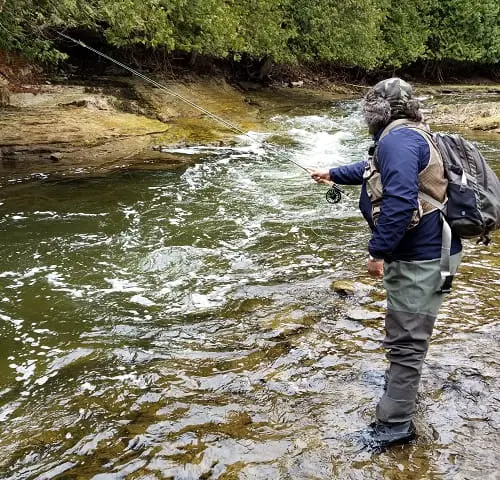
As I understand it and based on how Jack Dennis describes it, the Polish Style Nymphing method was the first version of the European Nymphing ever used and it was created by a competition fly fisher named Vladyslaw (“Vladi“) Trzebunia.
As the story goes Vladi outfished every competitor around him by such a large amount that nobody could even come close.
Vladi was so good that even his individual score during competitions was better than multiple teams’ scores combined. Vladi was so good he would even set the hook without detecting a strike and was able to catch soft biting grayling.
The original Polish Nymphing method uses a short leader that was about 2/3rds the length of the rod, which means you would use a 7-foot leader with a 10-foot rod. This would be combined with 2 or 3 heavy flies and a piece of colored mono between the top of the leader and the fly line.
No fly line or almost no fly line is used when fishing and only the leader is out of the rod guides as the flies are flipped out and then lead down the river directly under the rod tip.
The flies are suspended just off the bottom and because the leader is short and tight the entire time anything that touches the fly would be felt by the fisherman. With this method, I am almost slightly pulling the flies along.
The Polish method is a very short line version of European Nymphing and it can be excellent in deeper faster choppy water.
However, due to its short length, it’s not a method that I use often on clear shallow water with nervous trout. Under clear and shallow water conditions there on other methods and leaders that work better for catching fish.
Czech Nymphing
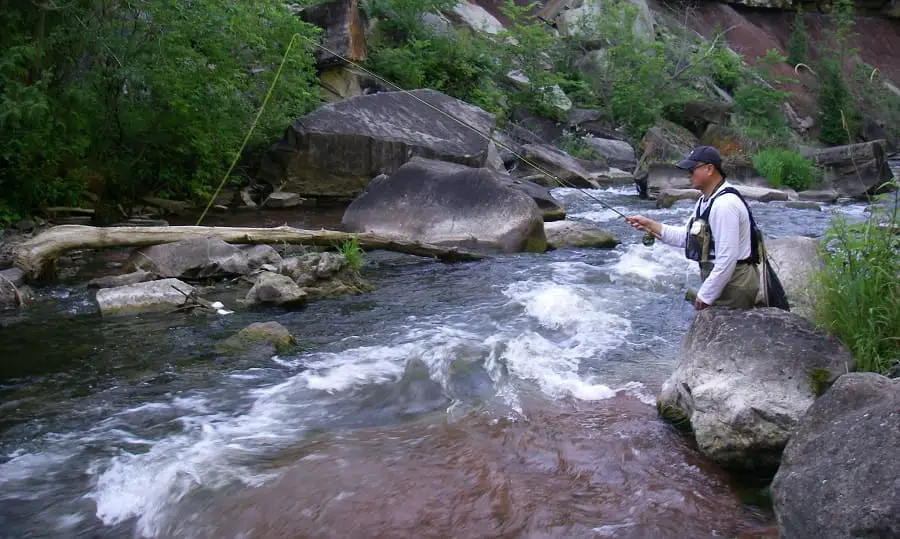
Czech Nymphing is what made European nymphing popular. Czech nymphing is basically a copy of the Polish-Style of Nymphing method that was slightly modified so that the sighter was more in the middle of the short 7 to 9-foot leader and the heavily weighted flies are then slowly pulled along under the rod tip.
Because the flies are pulled slightly faster than the current the strike detection is immediate and can often be seen and felt by the fisherman.
Check Nymph flies are also skinny and very heavy so they get down very fast and they stay down in the faster currents.
Like the Polish-Style Nymphing method, Czech Nymphing is also a short leader method and you need to get very close to the fish, therefore it is a good method to catch fish in faster noisy water where your close proximity to the fish is not going to spook them. This can be an excellent method in deep pocket water where traditional nymph fishing is tough.
I do not use the Czech nymphing method very much unless the condition call for it.
Spanish Nymphing
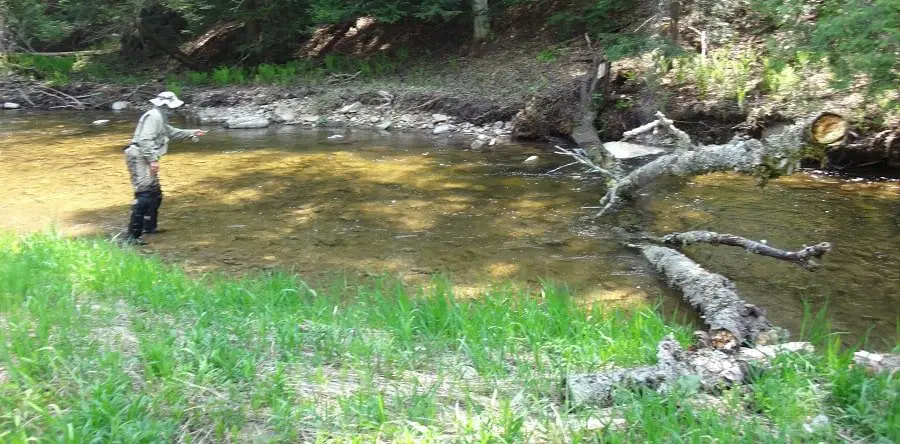
When it comes to landing fish, the Spanish competition anglers are hard to beat.
When you have low clear water with nervous trout the Spanish Nymphing method is one of the best nymph fishing options and is my preferred method.
Spanish nymphing is what I describe as long-line Czech-style Nymphing. The Spanish Nymphing leader in tournaments is usually double the length of the rod. That means the leader is 20 feet long on a 10-foot rod which allows you to fish more water and keep your nymphs in the strike zone longer.
The reason for the extra-long leader is that some rivers are shallow and very clear and the trout will spook easily if you get too close to them.
This makes the Polish and Czech methods not very productive.
The Spanish Nymphing leader still uses the Sighter and multiple weighted Euro Nymphing flies, except the flies tend to be lighter than Czech and Polish nymph fishing since the river is shallower.
The other thing that makes the Spanish method different is where the Spanish anglers position themselves when fishing. Spanish Nymph anglers will often stand behind or below the fish and cast upstream and across while staying behind the fish as much as possible.
Due to the greater distances, the learning curve is more, but once you learn constant connection, sink rate, and how to effectively set the hook, this method is hard to beat.
There are huge advantages to the Spanish Nymphing method which is why it’s so hard to beat the Spanish anglers in world fly fishing competitions and it’s why I use this method more than other methods.
The primary advantage to Spanish Nymphing is that you can effectively present your fly to fish that are far away from you so you don’t spook them, and you can make very long drifts which puts your fly in front of a lot more fish than the shorter line nymphing methods.
And you can do this with a lot of control and with good strike detection, and without traditional strike indicators.
Guide Tip: With Spanish Nymphing, you do not pull your flies through the water. Instead, you simply allow them to drift freely at the speed of the current, and then you just take up the slack and maintain slight and controlled tension between the rod tip and the flies.
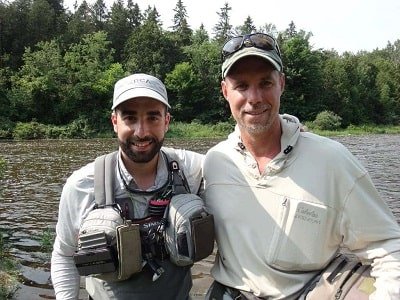
I had the opportunity to train with the world champion Spanish angler David Arcay and he said that during the tournaments they are only allowed to use a leader double the length of their fly rod, but when he fishes for fun or when he is training he would use 30 to 40-foot leaders.
I also use 30 to 40-foot leaders when fishing some water, however, unless I’m teaching advanced anglers, it’s best to stick with leaders under 20 feet.
FYI, David makes some great Euro nymphing rods and other competition-style products. Check out some of David’s custom Euro nymphing gear on his website ArcayFishing.com
Why Such Long Leaders When Euro Nymphing?
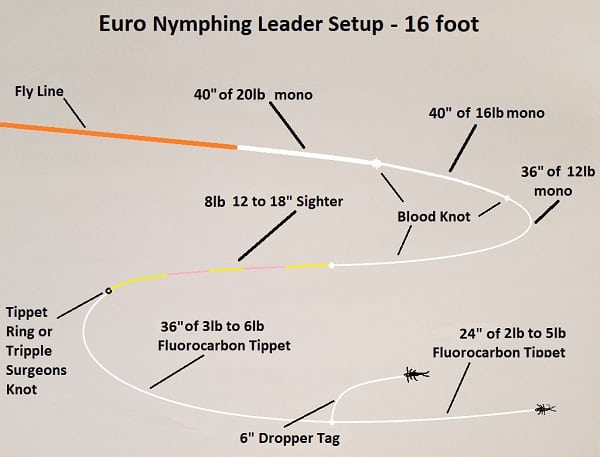
Most beginner anglers would struggle with even a 20-foot leader Spanish or French leader, but there are some major advantages to learning how to use 20 or 40-foot leaders when fishing wild nervous trout in clear waters.
- First, you can stay far away from the fish and present the fly far enough away that you do not spook the fish.
- There is no fly line landing on the water which can also spook fish.
- The angler holds the rod tip high and the entire leader can stay off the water.
- Long leaders have the advantage of fishing spots that are too far to wade to and are not accessible with other short-line methods.
Like the other euro nymphing methods, no fly line is used with the Spanish Nymphing method which means that anglers are casting 20 to 40 feet with nothing but a bare leader and a fly or two.
That’s pretty impressive, and with practice and the right setup, it really isn’t that hard to do.
Beginner Tips For Long Line Nymphing Leaders
The version of Euro Nymphing that I use the most and teach my clients is a combination of Spanish and French Nymphing which both use very long leaders.
When I’m guiding and teaching new anglers, I start with the 16-foot leader seen in the above diagram. I can pull in 5 feet of leader if needed.
I tell my clients to get good and comfortable casting and fishing with a ten-foot leader, then add a few feet and get good with that, and repeat until your comfortable casting over 20 feet of leader.
French Nymphing
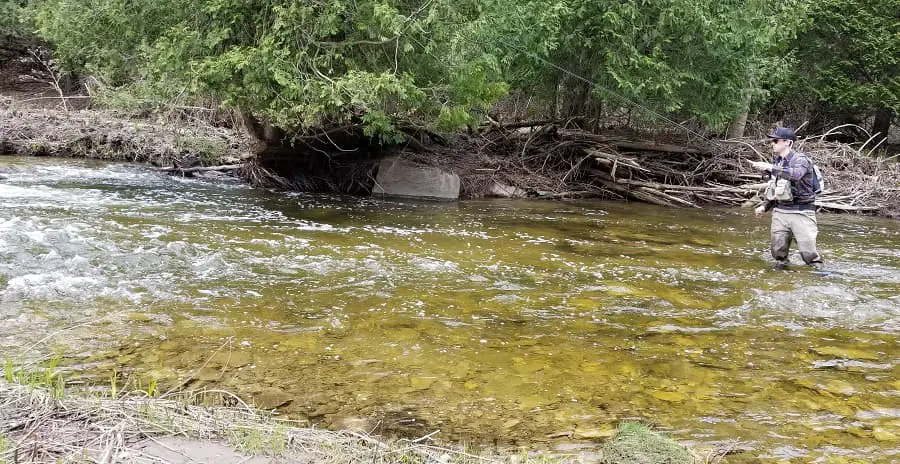
French nymphing is very similar to Spanish nymphing with the exception that the French tend to cast straight upriver and retrieve the flies back, and they end the drift just in from of them.
Whereas the Spanish will cast up and across and can let the flies drift past them and continue to fish downriver.
The advantage of the French Nymphing method is that you are directly behind the fish which makes it impossible for the fish to see them. The French adaptation is meant for low clear waters with very nervous trout.
The French method uses a long French leader with smaller weighted flies and they adjust the weight based on the velocity and depth of the current.
The reason for this is because of the slower and shallower water that the French fish and because they fish such long drifts that the lighter flies won’t sink to the bottom and get snagged up or drag the bottom the entire time.
Just like the Spanish anglers, the French competition anglers are very difficult to beat which is why my version of Euro nymphing that I mostly use and teach to clients is a combination of the French and Spanish nymphing methods.
I had the opportunity to fish with a competition angler from France and witnessed the French Nymphing method he used and compared it to the typical North American Nymphing methods.
It was amazing to watch and to see how extremely effective this French method was firsthand from an expert, and I witnessed him outfish all the local anglers by ten to one. He was so good he had 4 anglers sitting on the bank watching him fish.
The original French Nymphing versions also used very small flies which are much smaller and much lighter than the big heavy Czech nymphs that people think about when you mention Euro Nymphing.
The Euro Nymphing Set-Up
I have taught thousands of anglers how to Euro Nymph and the two things that matter the most when it comes to Euro Nymphing effectively are the rod and the leader setup.
The Best Setup:
- Fly Rod – Get a 10 foot two or three weight Euro Nymph Rod that fits your budget.
- Fly Reel – Any fly reel will work, just match it to the rod size. Due to the longer length, going one size up can make the rod less tip heavy.
- Fly Line – An all-purpose fly line work fine as long as you have a long enough leader. There are also competition fly lines specifically made for this style of nymphing. However, I’m not a fan since most of the time the is never out of the guides.
- Leader – A Spanish or French Leader setup is best for shallow to mid-depth rivers that are primarily under 6 feet deep. The leader should start with a stiff butt section, have a long middle section, a sighter, and a 3 to 6-foot section of tippet
- Tungsten Flies – A variety of sizes and types of tungsten bead head flies is best.
- Soft Weight Tungsten Putty – If my fly is not heavy enough or I am only allowed to use one fly and I need to use micro flies smaller than size 18 I will add tungsten putty about 3 to 6 inches up the line from the fly.
- Tippet Ring – Tippet rings are a great way to attach very thin tippets to the thicker sighter.
My current Euro Nymph setup is:
If you come out with me and think you are going to see a unique euro setup on my reel, you will be disappointed. I use backing connected to a standard fly line on all my reels so if I need to quickly switch from a nymph to a dry fly I can.
Then I add 40 feet of OPST with a loop-to-loop connection to the fly line. The OPST line is attached to my 16-foot Euro leader using a Double Uni Knot that is glued with UV Knot glue to ensure a nice smooth knot connection that won’t get stuck in my guides when a big fish pulls or I shoot 40 feet of OPST. This is basically a 56-foot leader and it works on every reel I own.
With this line/leader setup, I can easily teach new anglers with a short leader by keeping all the OPST in the reel, or I can teach advanced anglers how to cast and fish a 40 to 50-foot leader the next day without needing a setup change.
The OPST acts like an extension of the leader and works very well, but some anglers and top experts prefer to use Maxima Chameleon 20 to 30-pound leader line instead.
I will be adding a Euro Reel and Euro Rod page soon.
Myself and other guides are also now Euro Nymphing for steelhead and Salmon has proven to be very effective.
Got A Question About Euro Nymphing
If you have a question or comment about Euro Nymphing let me know in the comments section below.
Tight Lines,
Graham
